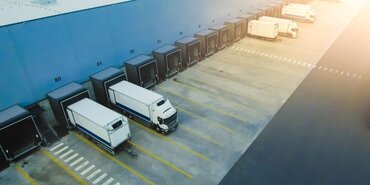TT Talk - Cargo securing: how to stop cargo movements going wrong

The safety and security of cargo, the structures that it is conveyed in, and the people that handle them are dependent upon many factors. The fact that the vast majority of movements arrive with their cargoes' integrity intact and nothing untoward having happened en route is testimony to the efficiency and effectiveness of the whole system.
The majority of packaged goods that travel internationally are carried in 'Cargo Transport Units' (CTUs), comprising in this context both freight containers and road/rail freight vehicles used in ro-ro operations. It is imperative that the loading of goods inside CTUs is planned and carried out so as to ensure that the condition of the loaded CTU does not itself either cause or accentuate a situation that endangers people, property or the environment.
This places prime responsibility upon the organisation arranging the packing, whether it is the shipper or a consolidation depot. The fact that, once the doors have been closed and secured, they are not normally likely to be opened until arrival at the eventual destination, underlines that this responsibility is a considerable one.
There are several important and inter-related elements.
-
If the CTU is a freight container, it should comply with the Container Safety Convention and be safe to be used. This includes evidence of continuous or periodic examination of the container structure ('ACEP'). If the container does not comply with regulations, it might be the cause of an accident during its journey or be stopped because of its condition.
-
The packer is responsible for undertaking checks to the CTU's interior and exterior to ascertain that it is safe to use - free from serious structural deficiencies - and generally cargo-worthy.
-
The CTU must also be suitable for the cargo to be carried and there is now a multitude of specialist boxes for particular types of cargo. So, the packer needs to consider the unit's fitness for the contemplated cargo and carriage. Failure to have the right box could spoil the cargo.
-
The next - and by far the most crucial aspect - is the way the cargo is packed and secured inside the CTU (whether a freight container or other conveyance). Many bad accidents have occurred on highways as well as in ports and on ships due to lack of proper packing provisions and/or inadequate securement arrangements.
There are numerous sources of valuable information to support cargo packing within CTUs. Many national freight forwarding and logistics trade associations provide materials and training, as well as insurers such as TT Club. International organisations, such as ICHCA International, also have produced guidance and the Club is currently working with the ICHCA International Safety Panel to prepare a guide of the essential elements of loading a CTU. As previously reported, the 1997 ILO/IMO/UN ECE guidance is in the early stages of being updated, but adherence to the existing guidance would be a start.
Finally, we would again recommend the information contained in the German Marine Insurers' website:
- Author
- Staff Author
- Date
- 25/10/2011





